Nayarit, a state located in western Mexico, is a diverse and unique region that boasts an array of breathtaking natural landscapes, including pristine beaches, dense forests, and rugged mountains.
This state is also home to a wide range of bird species that have adapted to the local climate and habitat. From the coastal marshes to the high-altitude forests, birds in Nayarit are an integral part of the state’s rich biodiversity.
In this article, we will take a closer look at some of the most common and interesting birds in Nayarit, highlighting their unique features, behaviors, and ecological roles.
1. Golden-Cheeked Woodpecker
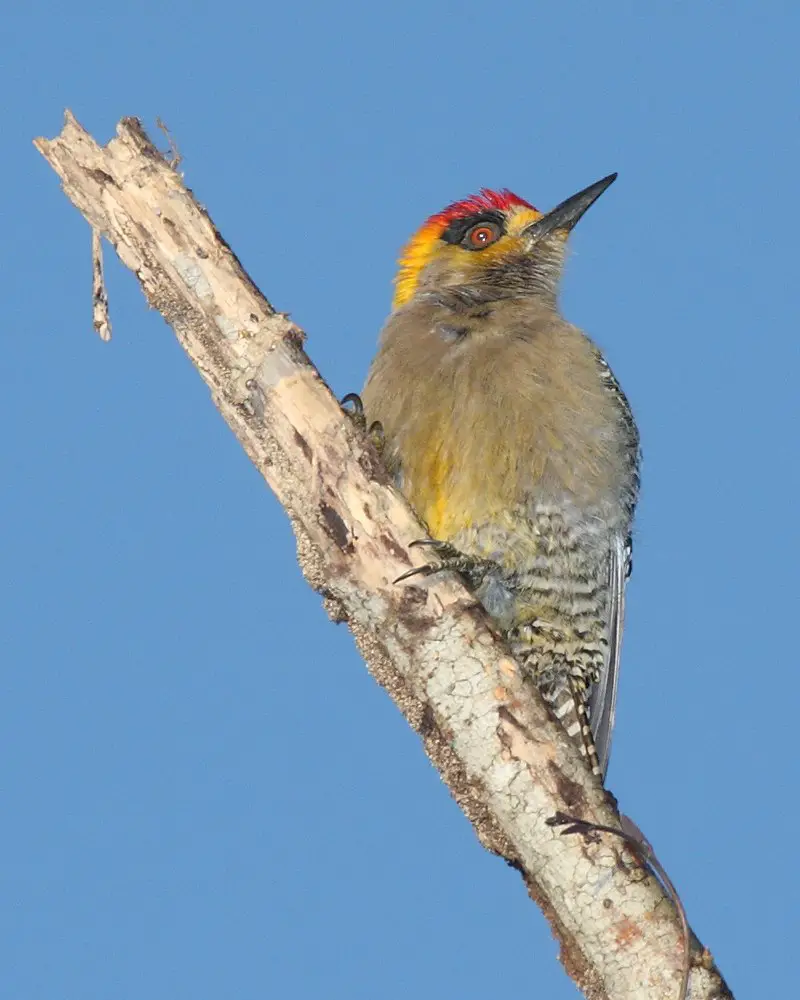
The Golden-cheeked Woodpecker is a unique species of bird found in Mexico. This beautiful creature has golden cheeks and chestnut plumage, with the male sporting a bright red crown on its head.
Endemic to the Pacific coastal strip from Sinaloa to Colima, it can also be seen inhabiting areas along the western mountain slopes of Trans-Mexican Volcanic Belt.
It prefers subtropical or tropical dry forests as their natural habitat where they search for food such as insects and larvae that are hidden deep inside tree trunks and branches.
The Golden-cheeked Woodpecker is an important part of Mexican wildlife which needs protection if we want this species to survive for future generations.Scientific classification:
| Kingdom | Animalia |
| Phylum | Chordata |
| Class | Aves |
| Order | Piciformes |
| Family | Picidae |
| Genus | Melanerpes |
| Species | M. chrysogenys |
Also Featured In: Top Birds Found in Mexico,
2. Inca Dove
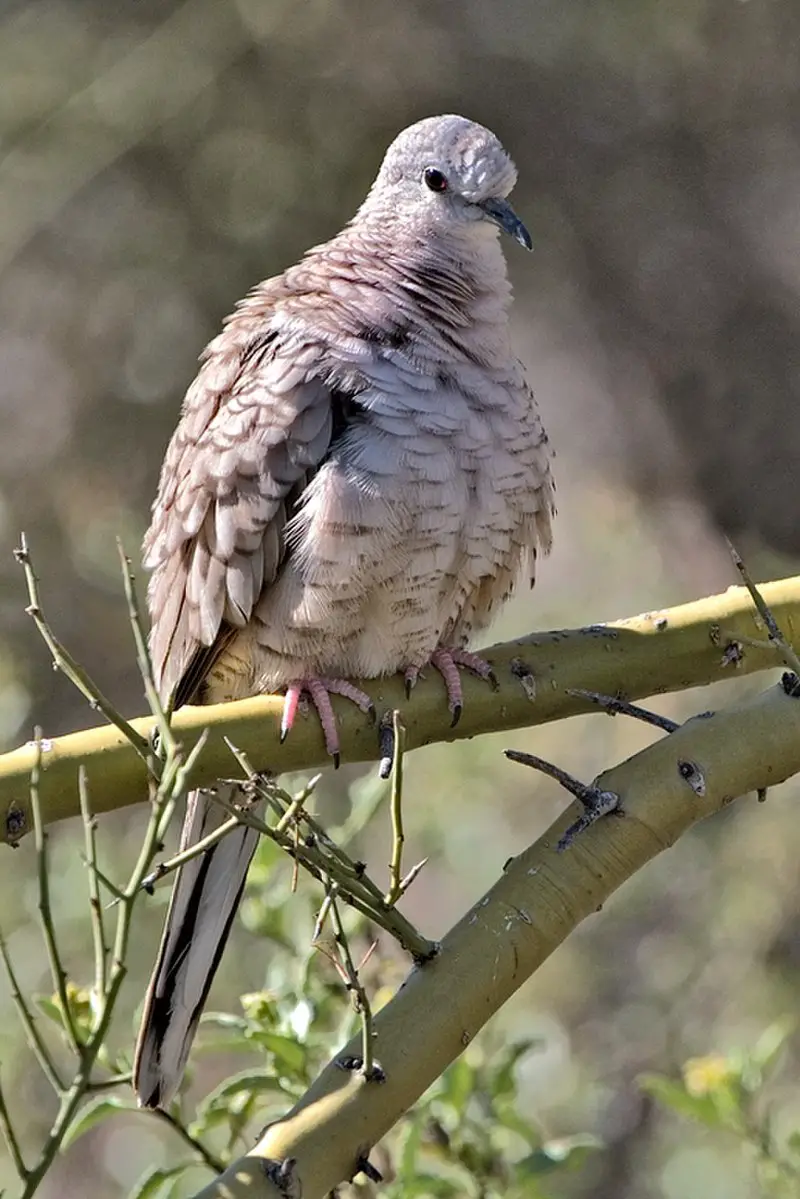
The Inca Dove is a small, slender bird found in the New World. It has an average length of 16.5–23 cm and weighs about 30-58 gm. Its wingspan measures around 28.5cm but can reach up to 32cm at max.
The body of this dove is grayish brown with feathers that are rounded off tips giving it a soft look overall.
This species was first described by French surgeon and naturalist René Lesson back in 1847 and since then have been living happily all over North America from Mexico through Texas to South Dakota, Kansas as well as parts of Arizona among others regions too.Scientific classification:
| Kingdom | Animalia |
| Phylum | Chordata |
| Class | Aves |
| Order | Columbiformes |
| Family | Columbidae |
| Genus | Columbina |
| Species | C. inca |
Also Featured In: Birds You’ll Find in South Texas , Birds You’ll Find in the Rio Grande Valley
3. Rufous-Backed Robin
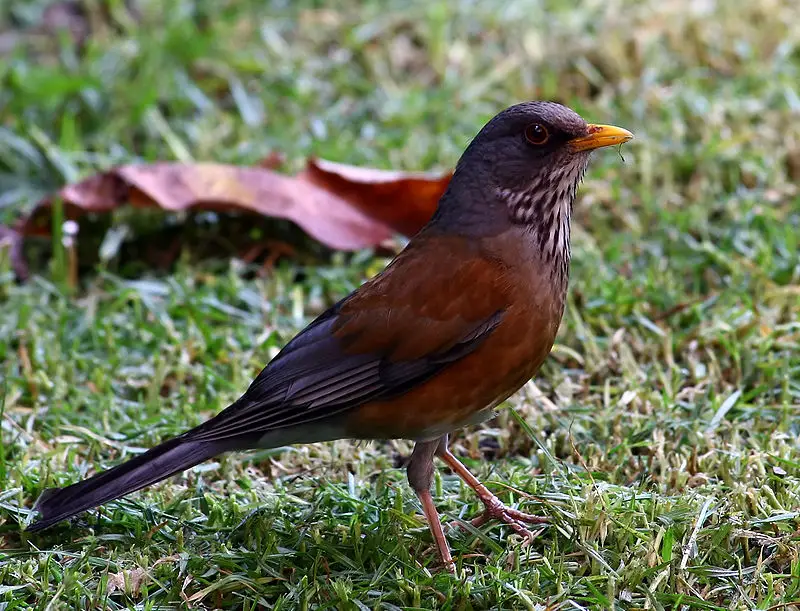
The Rufous-backed Robin, also known as the Rufous-backed Thrush, is a stocky songbird native to the Pacific slopes of Mexico.
With an average length of 21.5–24 cm (8.5–9.4 in) and weight 74 g (2.6 oz), it has similarities with its widespread relative – the American robin – but is slightly smaller in size, having an average wingspan measuring 39.4 cm (15.5 in).
It possesses striking features such as yellow eyes bordered by black eye rings; white throat surrounded by a grey neck patch; buffish upperparts that are crossed with darker streaks or spots on both sides; and lastly rusty red tail feathers which gives this species its name.Scientific classification:
| Kingdom | Animalia |
| Phylum | Chordata |
| Class | Aves |
| Order | Passeriformes |
| Family | Turdidae |
| Genus | Turdus |
| Species | T. rufopalliatus |
Also Featured In: Common Birds of Mexico City, Birds that Live in Morelos
4. Colima Pygmy Owl
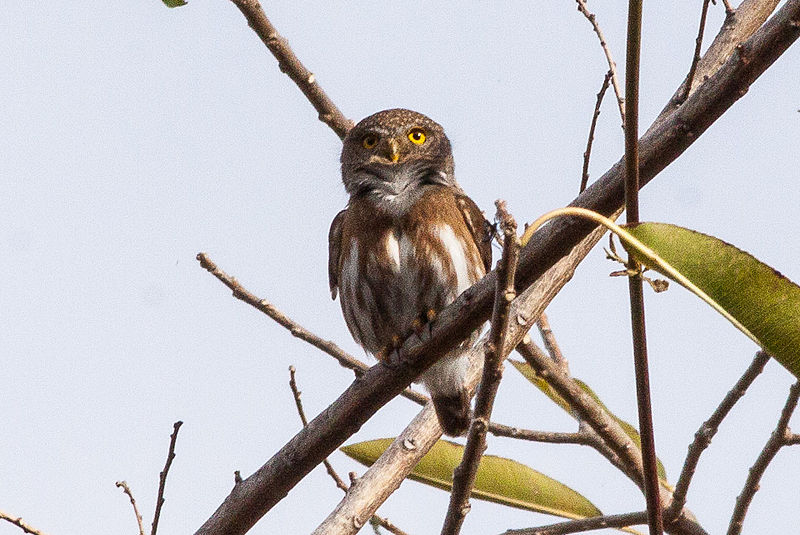
The Colima pygmy owl is a species of owl endemic to the western part of Mexico. It belongs to the family Strigidae and typically grows up to 8–9 inches in length, with males being slightly smaller than females.
The International Ornithological Committee recognizes three subspecies: G. palmarum palmarum, G. p oberholseri and G .p g.
They are mostly active during twilight hours when they hunt for small mammals like mice or voles from their perches atop trees or shrubs using their excellent hearing capabilities along with sharp eyesight which allows them superior vision even at night time.
During daytime, these owls can be found roosting on tree branches keeping cool under shady foliage while also remaining camouflaged amongst its surroundings due to its grey-brown coloration that helps it blend into bark patterns perfectly.Scientific classification:
| Kingdom | Animalia |
| Phylum | Chordata |
| Class | Aves |
| Order | Strigiformes |
| Family | Strigidae |
| Genus | Glaucidium |
| Species | G. palmarum |
5. Ruddy Ground Dove
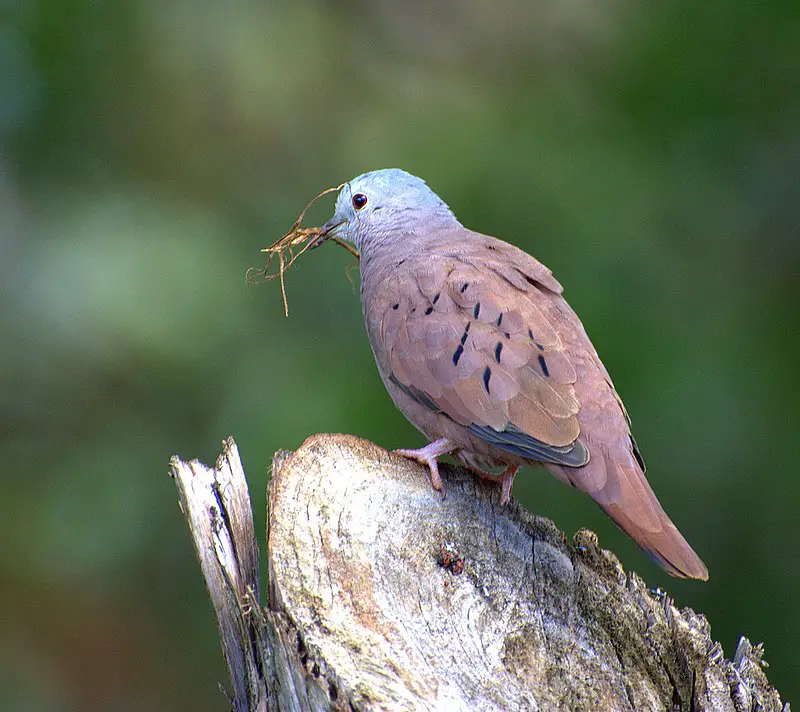
The Ruddy Ground Dove is a small New World tropical bird, found across Mexico and South America as far south as Argentina. It is also seen in the southwestern United States during winter months.
This ground dove typically lives in scrub or other open habitats such as savannas and grasslands, where it feeds on seeds from plants like cactus fruits.
Its plumage ranges from grey to reddish-brown with a light tan breast and black markings throughout its wings and tail feathers.
The male has more distinguishable colouration than the female but both sexes have bright red eyes which give this species its name – ‘ruddy’.
They are often observed perching low to the ground near food sources or nesting sites while also being quite vocal when flying between locations making them easier to spot.Scientific classification:
| Kingdom | Animalia |
| Phylum | Chordata |
| Class | Aves |
| Order | Columbiformes |
| Family | Columbidae |
| Genus | Columbina |
| Species | C. talpacoti |
Also Featured In: Most Common Birds in South America Birds,
6. Ringed Kingfisher
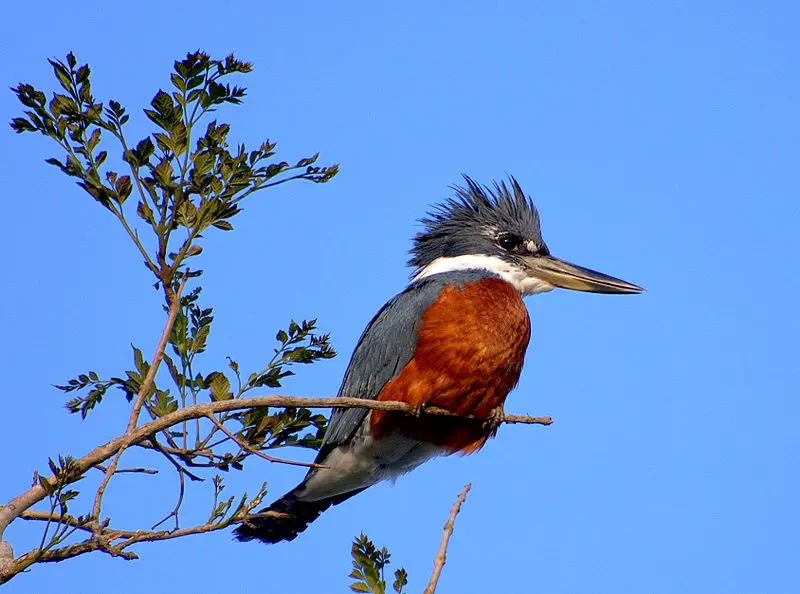
The Ringed Kingfisher is a large, vibrant bird that can be easily noticed by its loud call. It’s found in tropical regions from the lower Rio Grande Valley of southeastern Texas to Central America and even as far south as Tierra del Fuego.
This ground-dwelling species prefers to inhabit open areas near water bodies like streams, rivers and lakes which provide them with plenty of food such as fish, amphibians, crustaceans and insects.
In 1888 it was first identified by ornithologist Frank Chapman who noted its distinct ring pattern on the breast area.
The upperparts are dark blue while underneath they have white spots around their neck and belly region along with pale brown wings tipped in black stripes making this species quite unique among other kingfishers.
They may look intimidating but these birds actually play an important role for humans since they help control insect populations thus helping maintain a healthy balance within our ecosystems.Scientific classification:
| Kingdom | Animalia |
| Phylum | Chordata |
| Class | Aves |
| Order | Coraciiformes |
| Family | Alcedinidae |
| Subfamily | Cerylinae |
| Genus | Megaceryle |
| Species | M. torquata |
Also Featured In: Common Birds in Colombia, Birds that Live in Guyana
7. Groove-Billed Ani
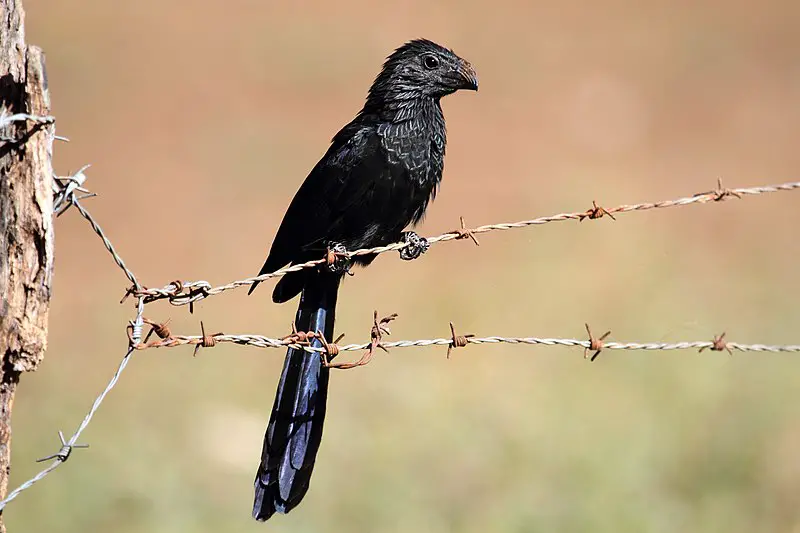
The Groove-billed ani is a tropical bird belonging to the cuckoo family. It has a long tail and large, curved beak.
This species can be found in many parts of Central America, from southern Texas to northern Colombia and Venezuela, as well as coastal Ecuador and Peru.
In some places it may retreat during colder months but overall they are considered resident birds throughout their range.
They prefer open woodlands near water sources like mangroves or swamps where there plenty of insects for them to feed on such as grasshoppers and beetles.
The beautiful coloration of this species ranges from blackish brown with orange spots on its wings that give way to bright blue feathers at the end of its tail making it quite striking.Scientific classification:
| Kingdom | Animalia |
| Phylum | Chordata |
| Class | Aves |
| Order | Cuculiformes |
| Family | Cuculidae |
| Genus | Crotophaga |
| Species | C. sulcirostris |
Also Featured In: Most Unique Birds in Peru, Birds that Live in the Grand Canyon National Park
8. Green Kingfisher
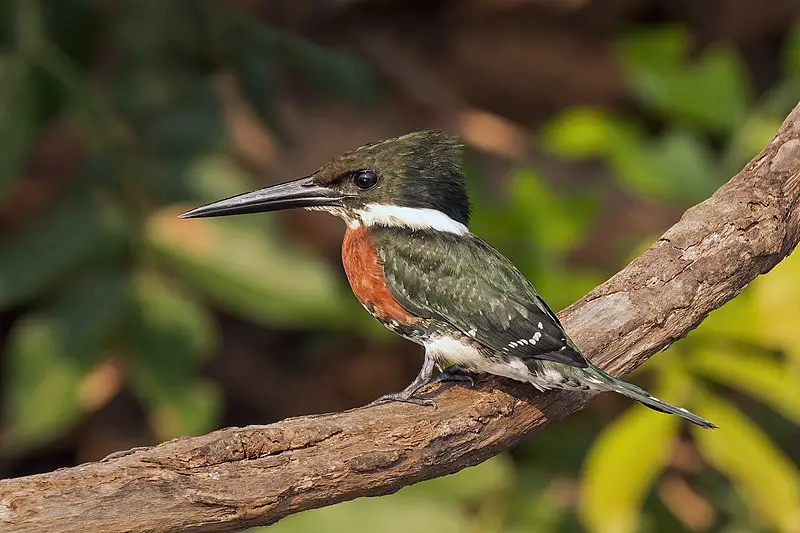
The Green Kingfisher is an incredibly vibrant bird, boasting a bright green plumage and long beak.
It can primarily be found throughout Central America, in most South American countries except Chile, as well as Texas in the United States and Trinidad & Tobago.
This species of water kingfisher belongs to subfamily Cerylinaeof family Alcedinidae which was first described by German naturalist Johann Friedrich Gmeiner back in 1788.
The Green Kingfishers are known for their active hunting habits where they perch above shallow waters looking out for prey such as small fish or crustaceans before diving down rapidly into the water with a loud splash.Scientific classification:
| Kingdom | Animalia |
| Phylum | Chordata |
| Class | Aves |
| Order | Coraciiformes |
| Family | Alcedinidae |
| Subfamily | Cerylinae |
| Genus | Chloroceryle |
| Species | C. americana |
Also Featured In: Most Common Birds Found in Chile, Green Birds in That Live in Texas
9. Bare-Throated Tiger Heron
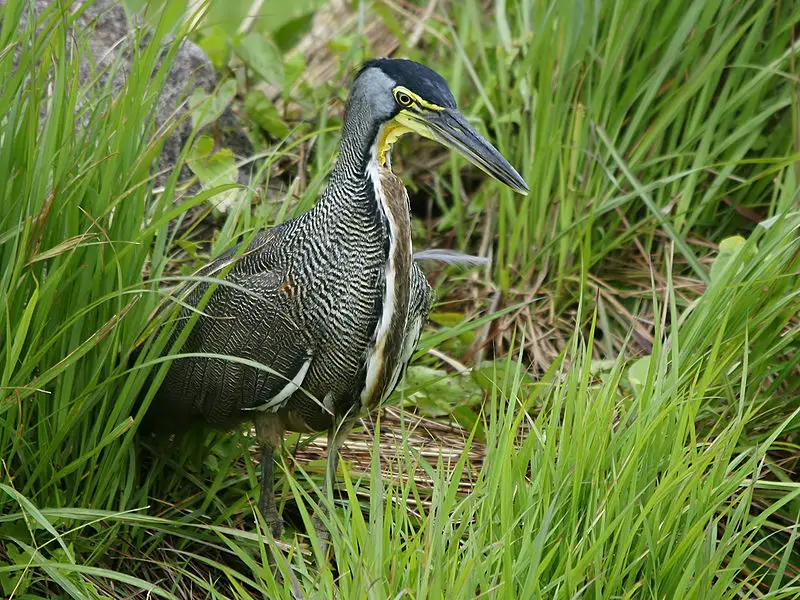
The Bare-throated Tiger Heron is an impressive wading bird belonging to the heron family, Ardeidae.
It has a length of 80 cm and weighs 1,200 grams. Found from Mexico to northwestern Colombia with one recorded sighting from the United States in Texas, it prefers more open habitats such as river and lake banks than other Tigrisoma herons.
Its plumage is blackish above with white spots on its back while its lower parts are chestnut brown or rufous in coloration.
The head and throat have bare yellow skin that can turn bright red when alarmed or during courtship displays.
Additionally, these birds feed mainly on fish but also eat amphibians, reptiles and aquatic insects which they capture by standing still before suddenly snatching them up.Scientific classification:
| Kingdom | Animalia |
| Phylum | Chordata |
| Class | Aves |
| Order | Pelecaniformes |
| Family | Ardeidae |
| Genus | Tigrisoma |
| Species | T. mexicanum |
Also Featured In: Colorful Birds of Nicaragua, Most Common Birds You’ll Find in Quintana Roo
10. Pale-Billed Woodpecker
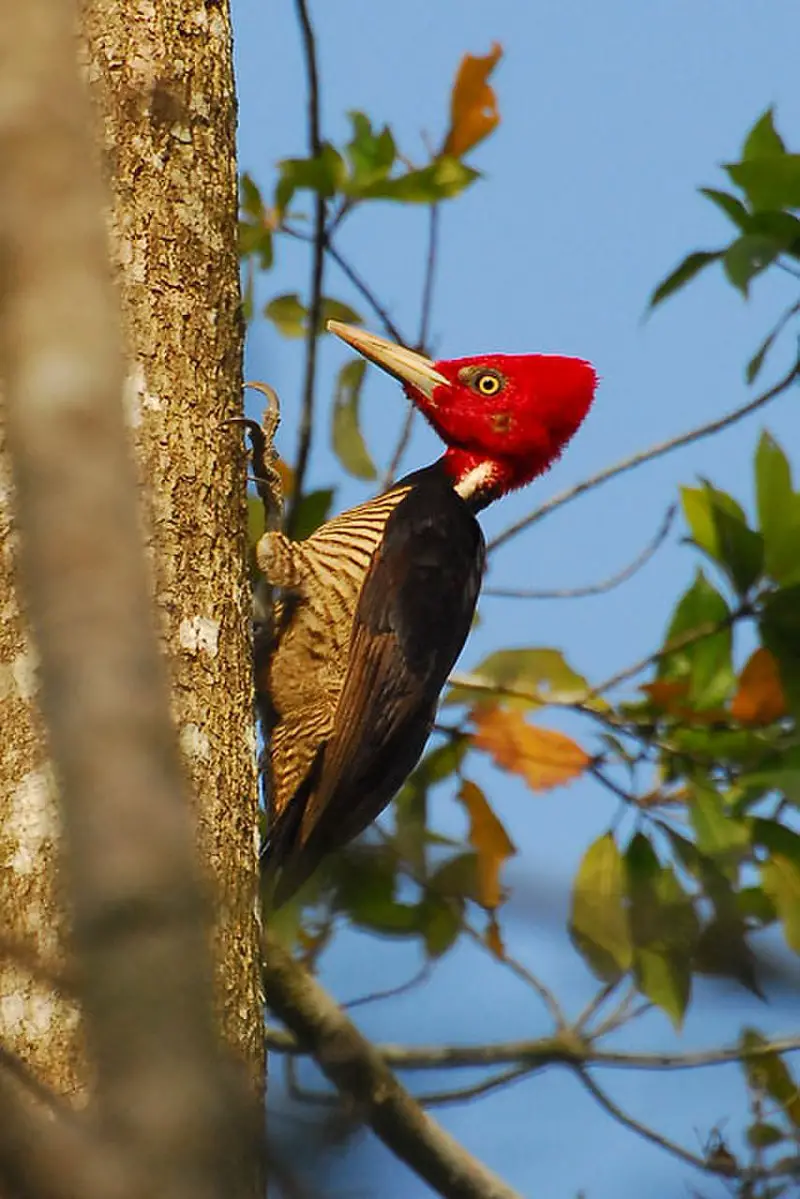
The Pale-billed woodpecker is a large, striking bird found in the tropical regions of Mexico to western Panama. It has an impressive size of 37 cm and weighs 255 g.
Its colouring consists mainly black plumage with white lines down its shoulders and a bushy crest on top. The most distinctive feature however is its pale bill which gives it its name.
This bird feeds mostly on dead or injured trees by pecking out insects from within them while they search for food in small groups or pairs. They are also known to feed on fruits, nuts, seeds and occasionally carrion too.
A truly remarkable species that adds beauty to the skies when flying around looking for their next meal.Scientific classification:
| Kingdom | Animalia |
| Phylum | Chordata |
| Class | Aves |
| Order | Piciformes |
| Family | Picidae |
| Genus | Campephilus |
| Species | C. guatemalensis |
11. Black-Bellied Whistling Duck
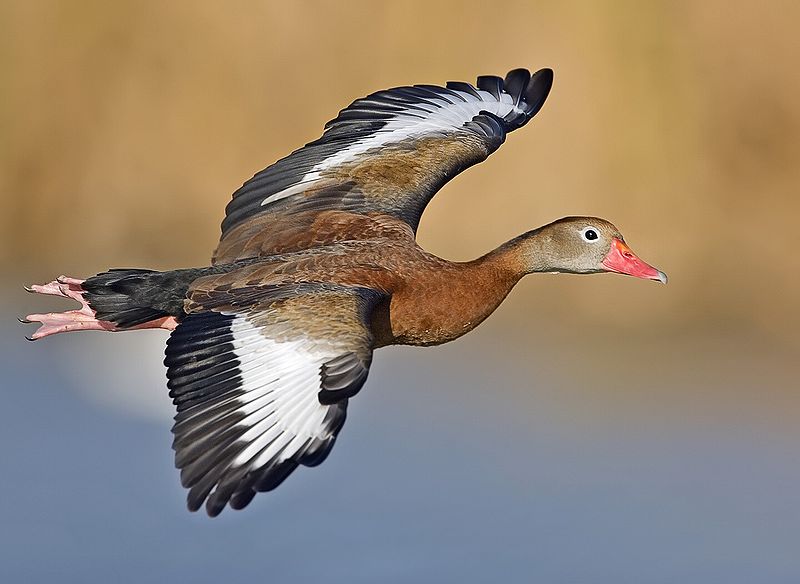
The Black-bellied whistling duck is a unique species of bird that can be found in the southern United States, Mexico, Central and South America. This small waterfowl has distinct black plumage on its belly which gives it its name.
Its call is also distinctive as it makes high pitched whistles to communicate with other members of its flock.
It prefers wetland habitats such as marshes, ponds and lakes where they feed on seeds and aquatic plants like wild rice or pondweed.
During breeding season these birds form monogamous pairs nesting in trees near bodies of water.
They are migratory birds but some may remain year round depending upon local climate conditions making them relatively common sights in certain areas during winter months when most other ducks have migrated further south for warmer weather.Scientific classification:
| Kingdom | Animalia |
| Phylum | Chordata |
| Class | Aves |
| Order | Anseriformes |
| Family | Anatidae |
| Genus | Dendrocygna |
| Species | D. autumnalis |
Also Featured In: El Salvador Birds, Birds that Live around Central Florida
12. Spotted Rail
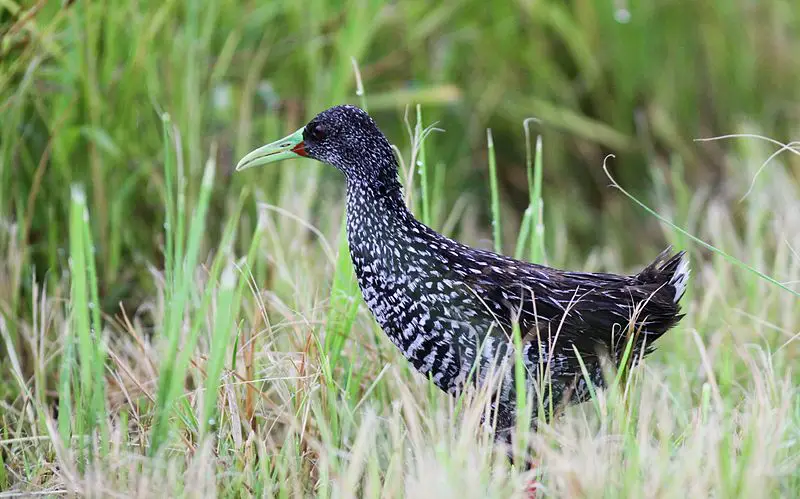
The Spotted Rail is a species of bird belonging to the subfamily Rallinae in the family Rallidae. It can be found across Mexico, Central America, Caribbean and South America.
This species was first described by French polymath Georges-Louis Leclerc Comte de Buffon in 1781 from a specimen collected in French Guiana.
These birds have an olive brown color with spotted blackish markings on their feathers which makes them easily recognizable amongst other species of railbirds.
They are usually seen near swamps or wet grasslands where they feed on small invertebrates like snails, worms and insects as well as seeds and aquatic plants depending upon seasonality and availability.
The IUCN has categorized this species under ‘Least Concern’ due to its wide range distribution but climate change may still pose threats for these birds if temperatures increase beyond certain limitsScientific classification:
| Kingdom | Animalia |
| Phylum | Chordata |
| Class | Aves |
| Order | Gruiformes |
| Family | Rallidae |
| Genus | Pardirallus |
| Species | P. maculatus |
Also Featured In: Trinidad and Tobago birds,
13. Thicket Tinamou
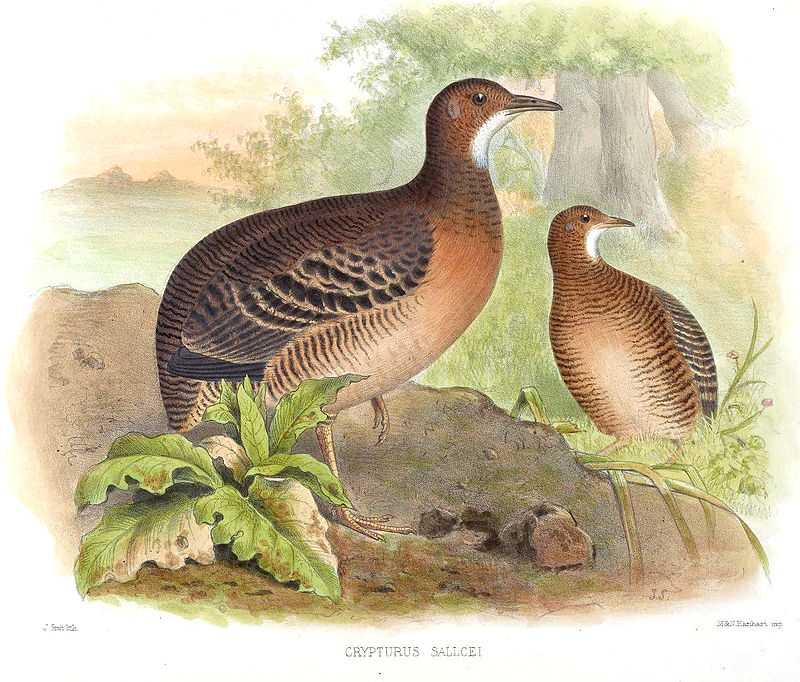
The Thicket tinamou is a type of bird found in moist forests of Central Mexico. It belongs to the family Tinamidae and is classified as a ratite, which are flightless birds that evolved from prehistoric flying species.
Despite its lack of strong flying abilities, this small brownish-grey bird can fly short distances and usually hops around on the ground instead.
Their diet consists mainly of fruits, seeds, insects and other invertebrates they find while foraging through vegetation or even grazing at times during dry season when food sources become scarce.
These solitary birds typically form pairs only during mating season where both parents work together to incubate eggs until hatchlings emerge into the world.Scientific classification:
| Kingdom | Animalia |
| Phylum | Chordata |
| Class | Aves |
| Infraclass | Palaeognathae |
| Order | Tinamiformes |
| Family | Tinamidae |
| Genus | Crypturellus |
| Species | C. cinnamomeus |
Also Featured In: Belize Birds,
14. Ruddy Quail-Dove
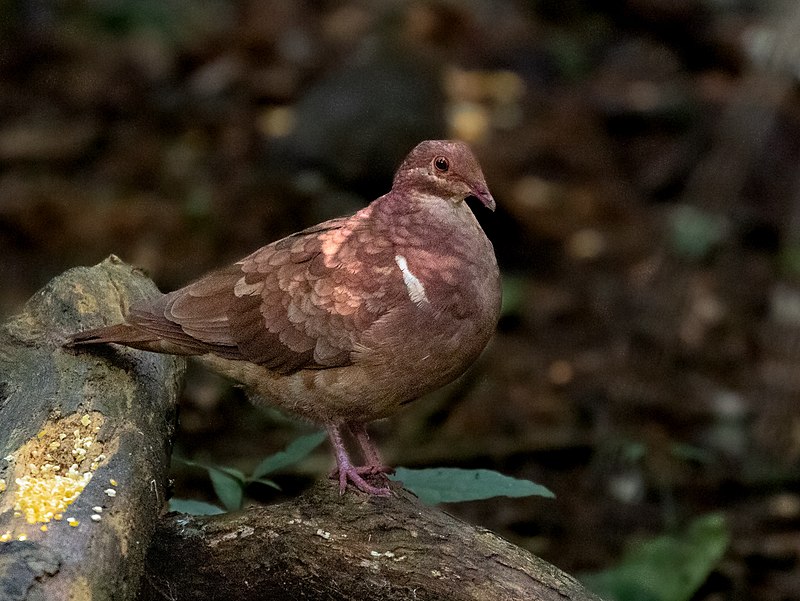
The Ruddy Quail-Dove is a beautiful bird native to the West Indies, Central and South America. It has a reddish brown plumage with dark spots on the wings and neck that give it an attractive appearance.
Its size ranges from 19–28 cm in length. The dove builds its nest either on shrubs or sometimes directly on the ground, laying two buff-colored eggs as part of their breeding cycle.
In recent years, there have been sightings of this species as far north as Florida and Texas proving just how resilient these birds are.
They feed mainly upon fruits found in woodland areas but also consume small invertebrates at times too.
All in all, this stunningly colored creature makes for an amazing addition to any environment they inhabit.Scientific classification:
| Kingdom | Animalia |
| Phylum | Chordata |
| Class | Aves |
| Order | Columbiformes |
| Family | Columbidae |
| Genus | Geotrygon |
| Species | G. montana |
Also Featured In: Saint Lucia Birds, British Virgin Islands Birds You Need to See
15. Yellow-Crowned Night Heron
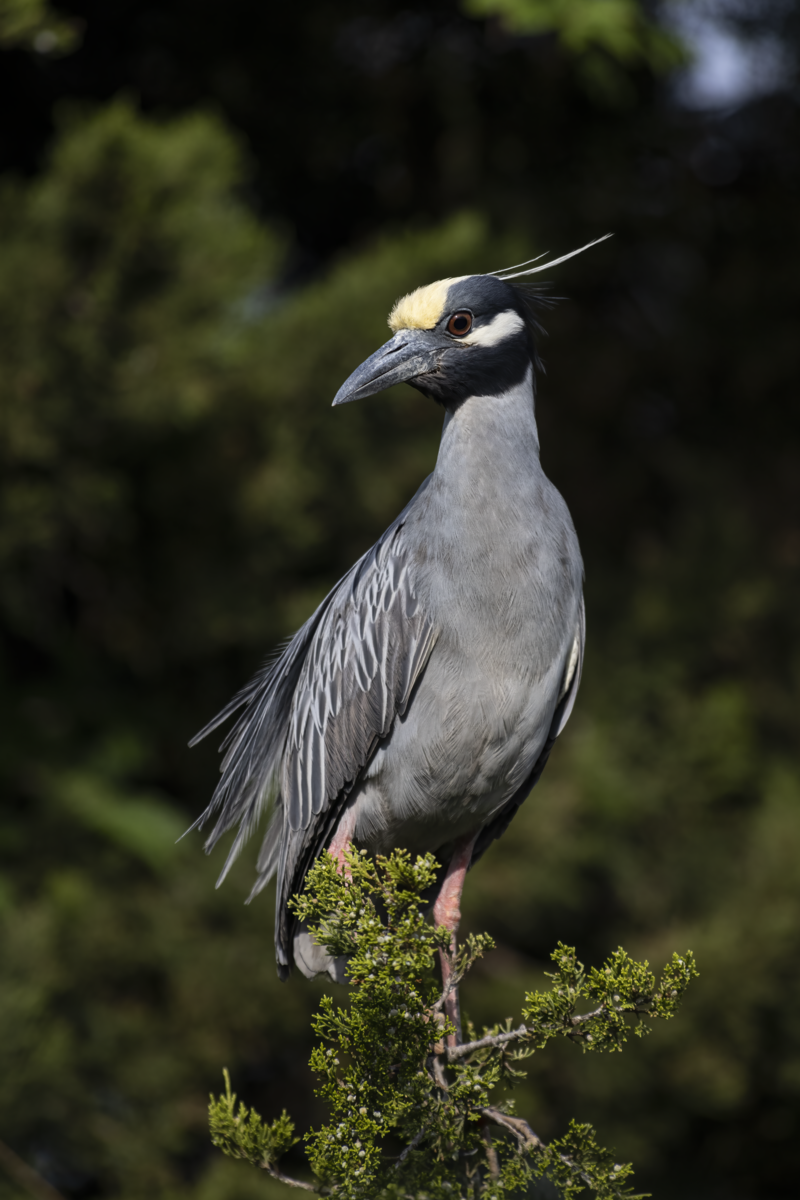
The Yellow-crowned night heron is a beautiful and unique species of bird native to the Americas. It has distinctive yellow crowns on its head, making it easy to identify among other herons.
These birds are also larger than most other types of herons, reaching up to 70 cm in length and 850 g in weight.
They usually feed on small fish or crustaceans while wading through shallow waters with their long legs.
The yellow-crowned night heron can be found near marshes or lakes during breeding season when they will build nests made from twigs high above the ground for protection against predators like raccoons and foxes.
This majestic bird is an important part of wetland ecosystems as it helps keep populations of smaller aquatic animals balanced by preying upon them.Scientific classification:
| Kingdom | Animalia |
| Phylum | Chordata |
| Class | Aves |
| Order | Pelecaniformes |
| Family | Ardeidae |
| Genus | Nyctanassa |
| Species | N. violacea |
Also Featured In: Bermuda birds, Flight Birds You Should Know
16. Common Gallinule
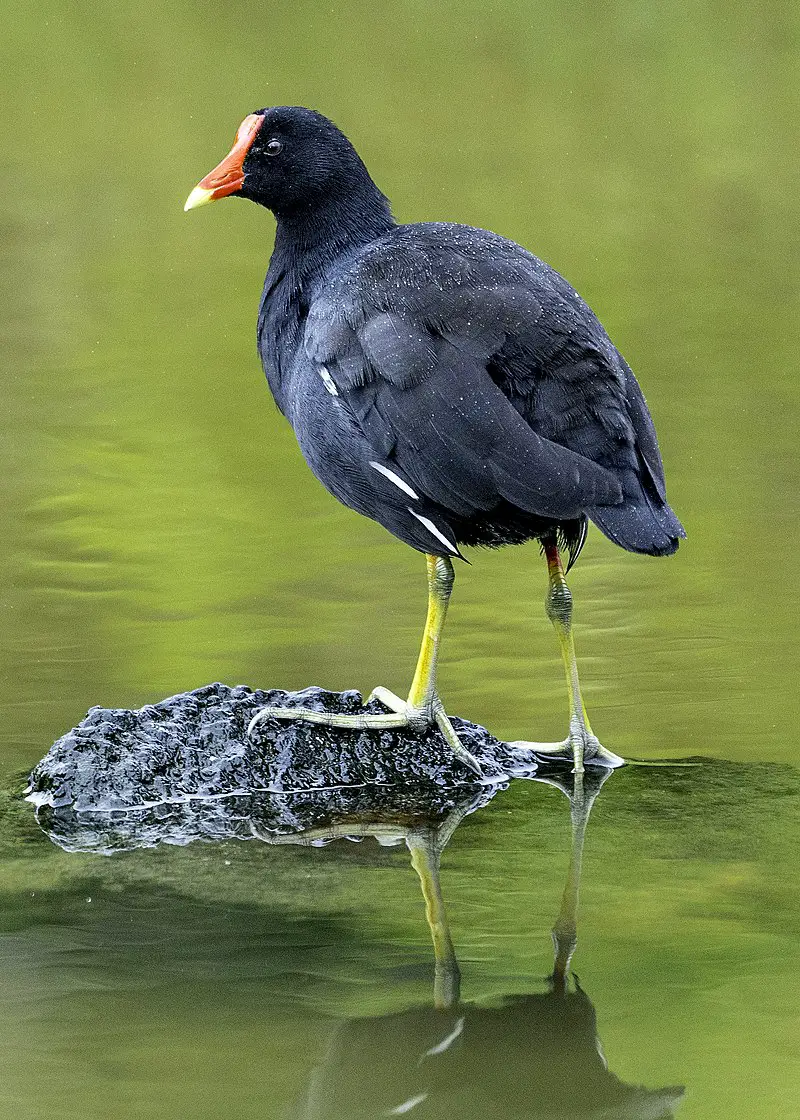
The Common Gallinule is a bird of the Rallidae family, native to parts of the Americas. It can be found in marshes, ponds and other wetland habitats which are well-vegetated.
This species prefers temperate climates and is not generally seen in polar regions or rainforests.
It has mainly greyish plumage with black wings and tail feathers, while its head has orange markings on either side along with an orange bill and yellow legs.
The underside usually appears white when flying but may have buffy undertones during breeding season.
Its diet consists primarily of aquatic vegetation as well as small invertebrates such as insects, snails or tadpoles; sometimes it will also take grains from fields nearby wetlands if available.
The Common Gallinule’s main call is a loud “kuk-kaa-kow” sound that can often be heard echoing across these areas where they reside.Scientific classification:
| Kingdom | Animalia |
| Phylum | Chordata |
| Class | Aves |
| Order | Gruiformes |
| Family | Rallidae |
| Genus | Gallinula |
| Species | G. galeata |
Also Featured In: Long Island Birds You Should Know, Swamps Birds You Should Know
17. Violet-Crowned Hummingbird
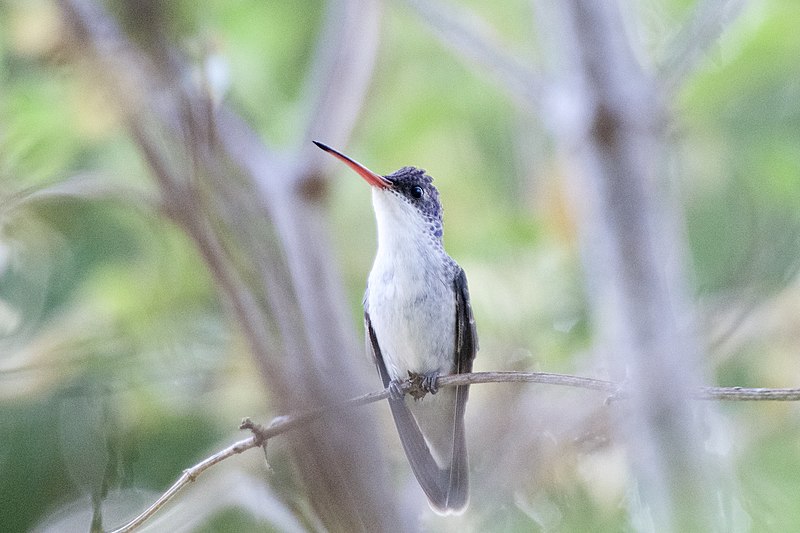
The Violet-crowned Hummingbird is a small, colorful bird found in Mexico and the southwestern United States. It belongs to the “emeralds” tribe Trochilini of subfamily Trochilinae, and was formerly placed in genus Amazilia.
The hummingbird has predominantly green plumage with white underparts, while its head features a distinctive violet crown that gives it its name.
On top of this striking coloration, males sport an iridescent gorget or throat patch which can range from purple to blue depending on lighting conditions.
These tiny birds feed mainly on nectar from flowers but also supplement their diet with insects caught mid flight for extra protein.
They are solitary creatures except during breeding season when they engage in territorial disputes over access to good food sources such as flowering trees or shrubs near water resources where there are plenty of bugs for them to catch too.Scientific classification:
| Kingdom | Animalia |
| Phylum | Chordata |
| Class | Aves |
| Order | Apodiformes |
| Family | Trochilidae |
| Genus | Ramosomyia |
| Species | R. violiceps |
Also Featured In: Hummingbirds Species, Birds that Live in Jalisco Birds
18. Lilac-Crowned Amazon
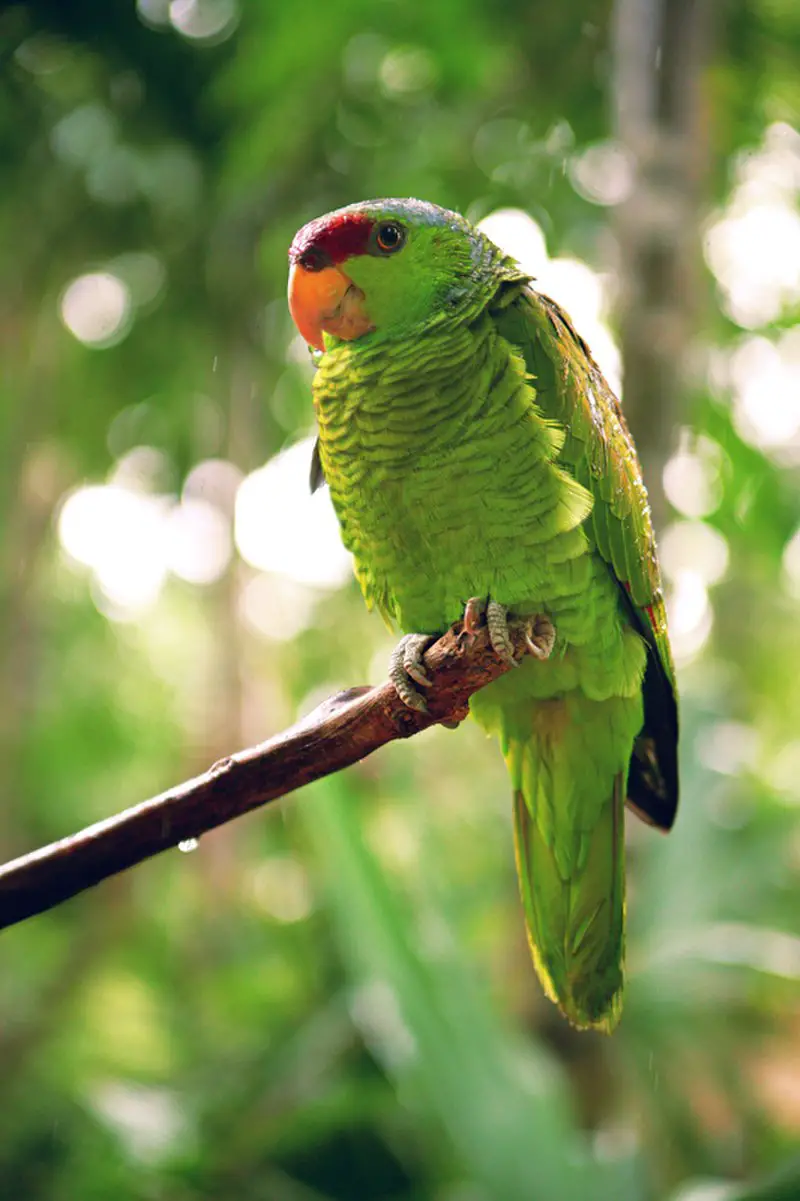
The Lilac-crowned Amazon is a vibrant and beautiful parrot endemic to the Pacific slopes of Mexico. It has green plumage, maroon forehead, and violet-blue crown and neck which make it distinct from other species in its range.
The binomial of this bird was named after the German naturalist Otto Finsch who first described this species in 1871.
Unfortunately, due to illegal trapping for pet trade as well as habitat destruction by deforestation activities, its population has been declining since 2006 when BirdLife International classified it as vulnerable on their Red List.
As per IUCN’s 2014 uplisting report, conservation efforts are needed if we want to save these magnificent birds from extinction.Scientific classification:
| Kingdom | Animalia |
| Phylum | Chordata |
| Class | Aves |
| Order | Psittaciformes |
| Family | Psittacidae |
| Genus | Amazona |
| Species | A. finschi |
Also Featured In: Parrots Species,
19. Ladder-Backed Woodpecker
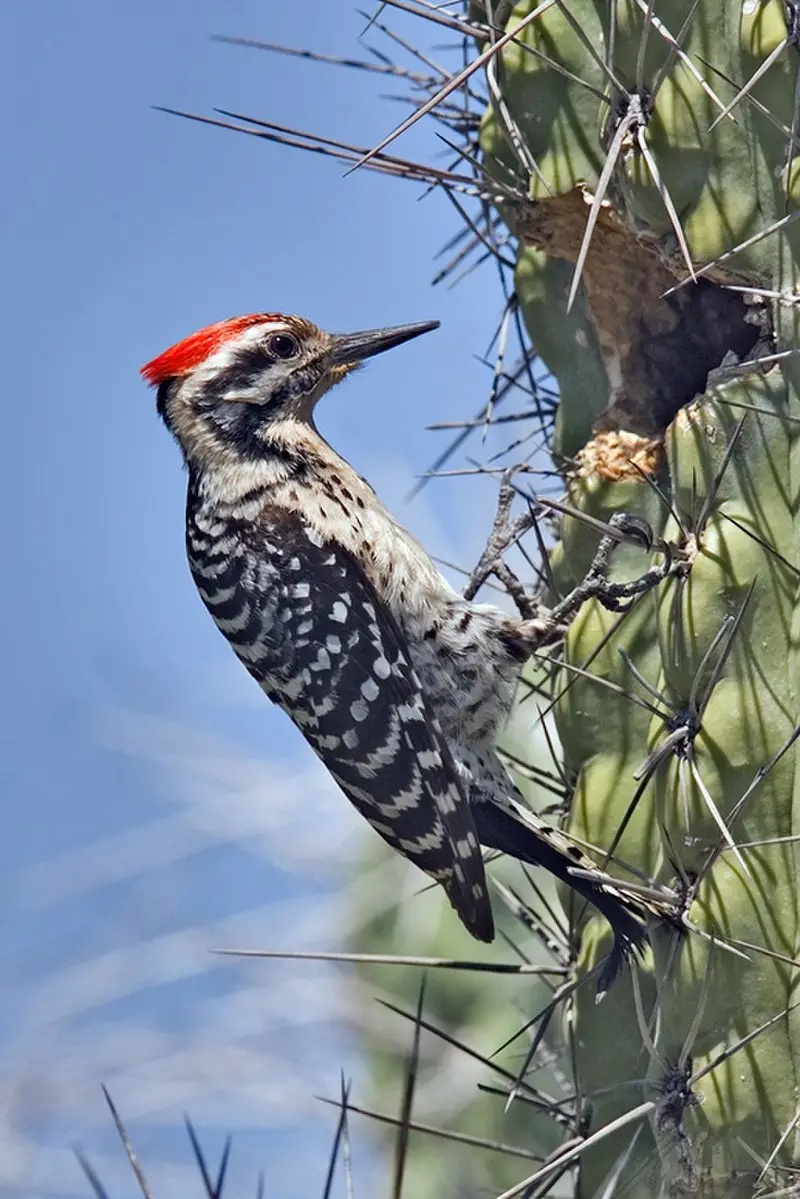
The Ladder-backed Woodpecker is a small black and white bird native to North America.
At about 16.5-19 cm in length, it has a characteristic barred pattern on its back resembling the rungs of a ladder, as well as speckled black rump and cream colored underparts on its breast and flanks.
These birds can be found inhabiting woodlands across their range, where they feed mostly on insects that they find by drilling into trees or hunting from exposed branches.
Their call consists of short chirps repeated every few seconds with an occasional longer trill thrown in for good measure.
They are also known to use twigs or other objects to probe crevices while searching for food – making them quite resourceful hunters indeed.Scientific classification:
| Kingdom | Animalia |
| Phylum | Chordata |
| Class | Aves |
| Order | Piciformes |
| Family | Picidae |
| Genus | Dryobates |
| Species | D. scalaris |
Also Featured In: Woodpeckers Species, Central Texas Birds
20. Arizona Woodpecker
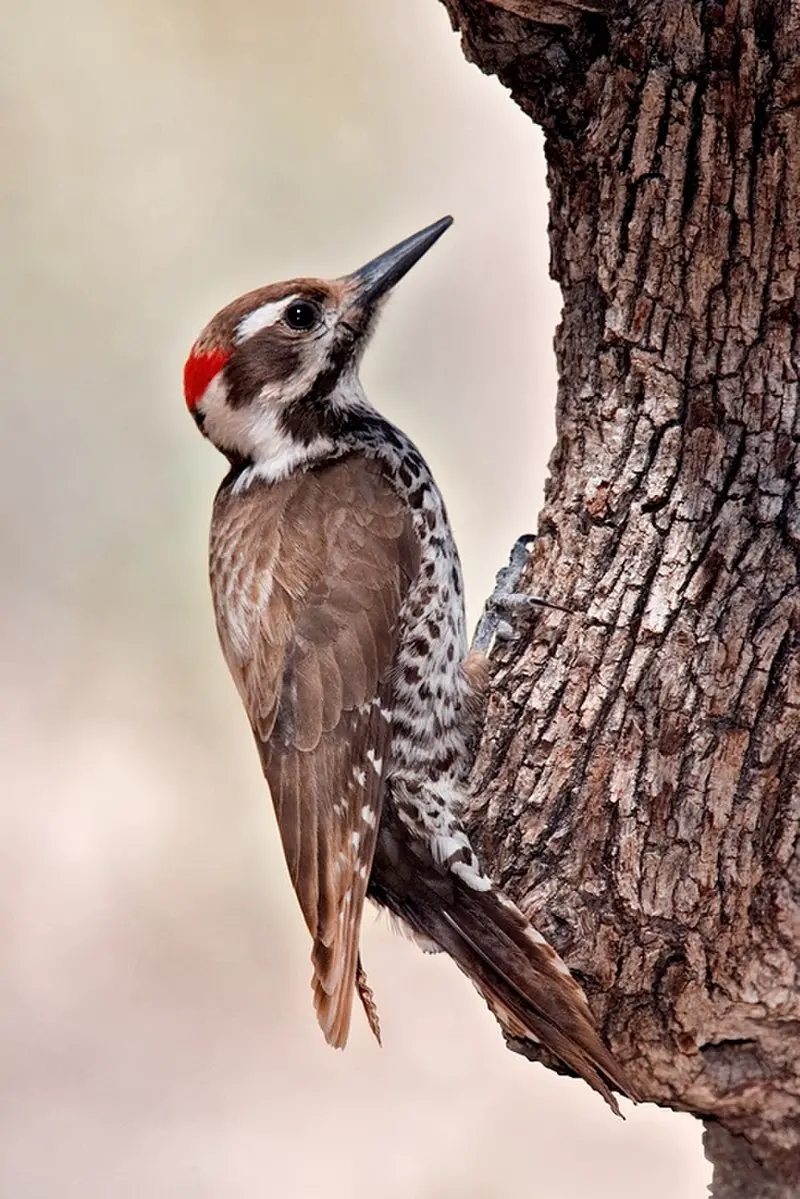
The Arizona Woodpecker is a small, colorful bird native to the Southwest United States and northern Mexico.
With its striking black and white stripes on its back, red crown and nape patch, it stands out in the desert landscape.
It inhabits mostly pine-oak woodlands at higher elevations of 4500 feet or more. This species feeds mainly on insects found beneath tree bark but will also eat fruit when available.
Their drumming can be heard up to 1/2 mile away.
These birds are vulnerable due to their limited range and habitat loss from logging activities in these areas.
Conservation efforts must remain focused where they live if we want future generations of this amazing bird alive for us all to enjoy.Scientific classification:
| Kingdom | Animalia |
| Phylum | Chordata |
| Class | Aves |
| Order | Piciformes |
| Family | Picidae |
| Genus | Leuconotopicus |
| Species | L. arizonae |
21. Smoky-Brown Woodpecker
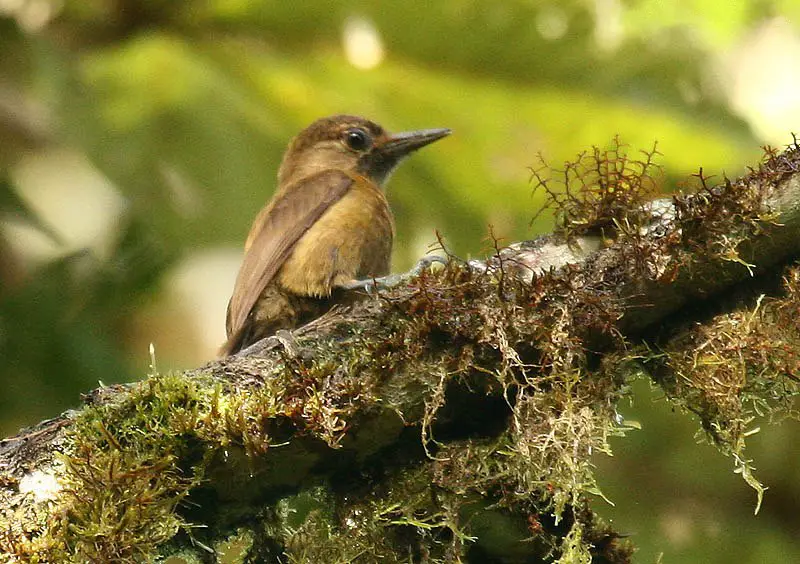
The smoky-brown woodpecker is a species of bird in the family Picidae, found throughout South and Central America.
It was first described by French naturalist Alcide d’Orbigny who observed individuals in Argentina’s Province of Corrientes.
This medium sized bird has black plumage on its head, wings and back with dark brown underparts. Its beak is yellowish white while its feet are greyish-black.
The male also features red patches on both sides of his neck which distinguish him from the female.
These birds feed mainly on insects but will eat some fruit too, digging holes in trees to extract their food source or hammering away at bark peels for larvae underneath it.
They can often be seen near open areas like forest edges or pastures where they nest between March and August each year usually laying two eggs per clutch that hatch after 14 days incubation period.Scientific classification:
| Kingdom | Animalia |
| Phylum | Chordata |
| Class | Aves |
| Order | Piciformes |
| Family | Picidae |
| Genus | Leuconotopicus |
| Species | L. fumigatus |
22. Black-Throated Magpie-Jay
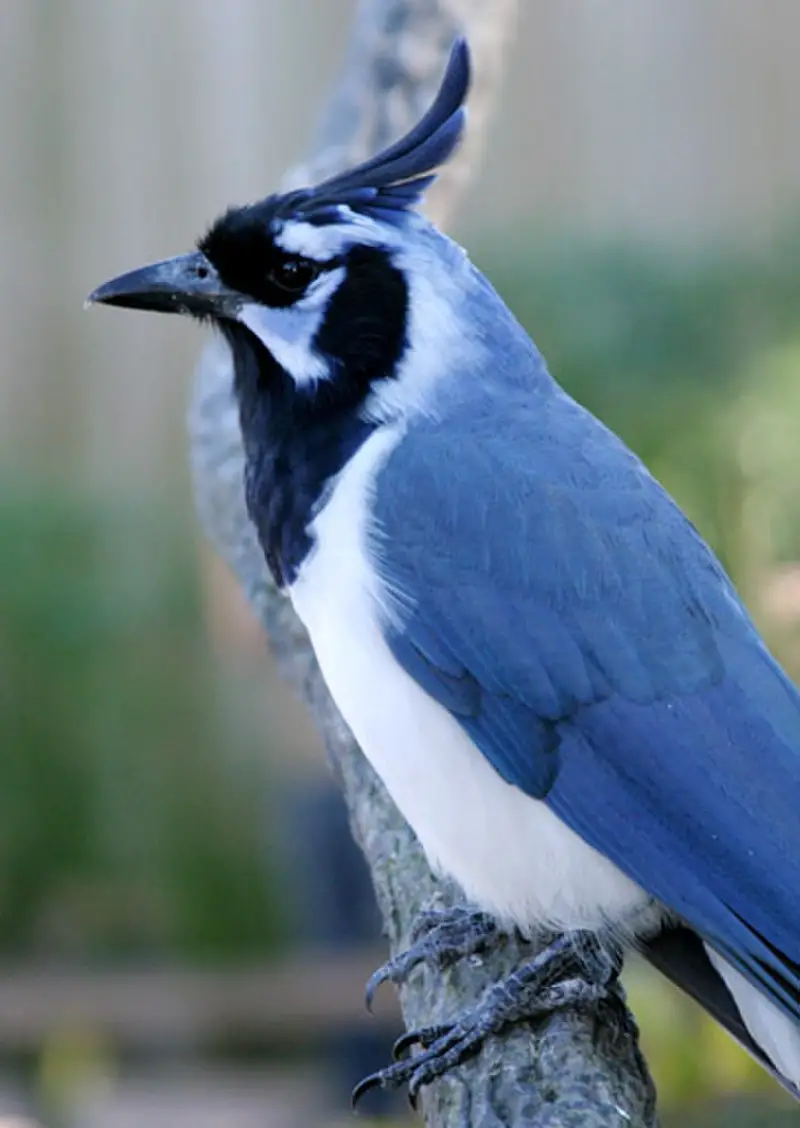
The Black-throated magpie-jay is a visually stunning bird with a long tail found in the northwest region of Mexico. It was described for the first time in 1829 by the Irish zoologist Nicholas Aylward Vigors.
The bird was first discovered in San Blas, Nayarit, Mexico, where it was obtained by explorers on an expedition to explore the western coast of North America.
The bird’s vibrant colors and unique features make it stand out from other bird species in its vicinity.
With its gorgeous black throat and blue feathers, the Black-throated magpie-jay is often admired by bird enthusiasts and scientists alike.
Its distinct appearance and remarkable characteristics have captured the fascination of many, making it an important species to study and conserve.Scientific classification:
| Kingdom | Animalia |
| Phylum | Chordata |
| Class | Aves |
| Order | Passeriformes |
| Family | Corvidae |
| Genus | Calocitta |
| Species | C. colliei |
Also Featured In: Puerto Vallarta Birds You Should Know,
23. Citreoline Trogon
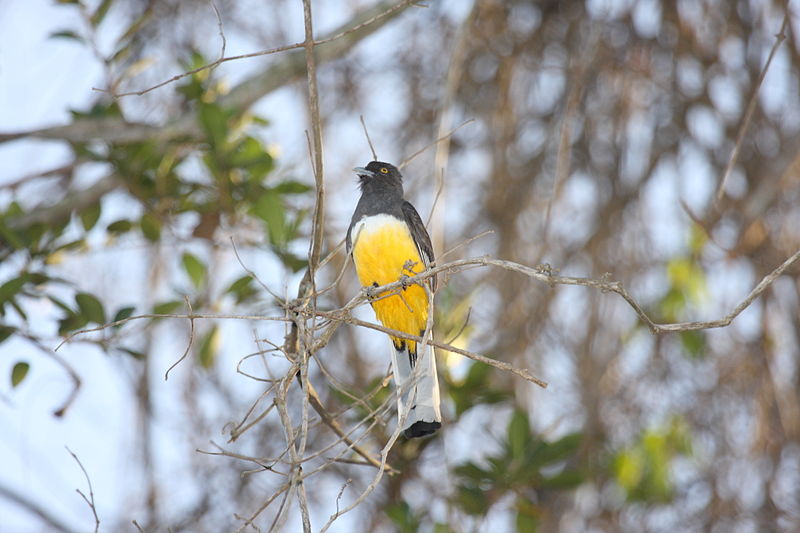
The Citreoline trogon bird is a species of bird in the Trogonidae family. It is found only in Western Mexico and has a vast estimated distribution size.
This has led to the IUCN classifying the species as least concern regarding conservation concerns, and its population trend as stable.
The bird has been studied as an ecosystem engineer, but there is not much other knowledge available about this species.Scientific classification:
| Kingdom | Animalia |
| Phylum | Chordata |
| Class | Aves |
| Order | Trogoniformes |
| Family | Trogonidae |
| Genus | Trogon |
| Species | T. citreolus |
Also Featured In: Common Birds of Guerrero, Most Common Oaxaca Birds
24. San Blas Jay
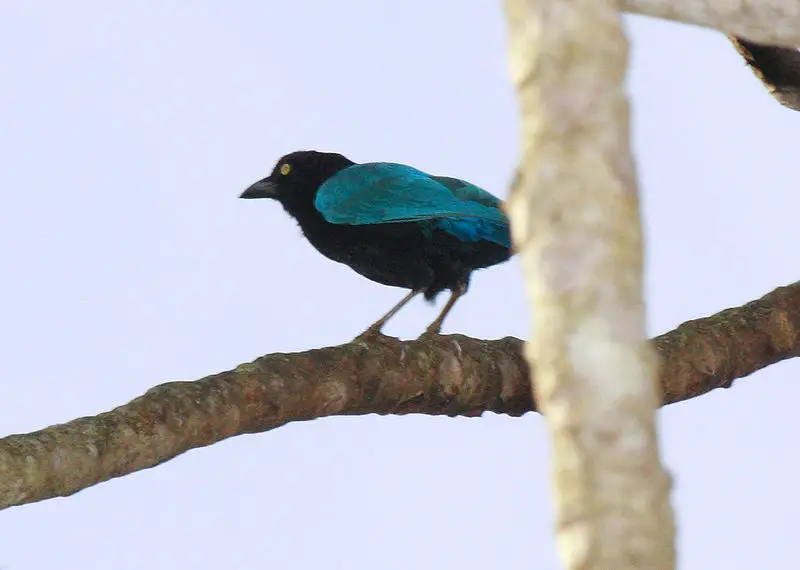
The San Blas jay is a bird native to Mexico. It can be found in subtropical or tropical dry forests. The species is rated as “least concern” by the IUCN, as it is a common bird.
The adult San Blas jay has a length of 27 to 35 cm and weighs between 92 and 122 g. Both sexes are similar in appearance. It belongs to the Corvidae family.Scientific classification:
| Kingdom | Animalia |
| Phylum | Chordata |
| Class | Aves |
| Order | Passeriformes |
| Family | Corvidae |
| Genus | Cyanocorax |
| Species | C. sanblasianus |
25. Golden Vireo
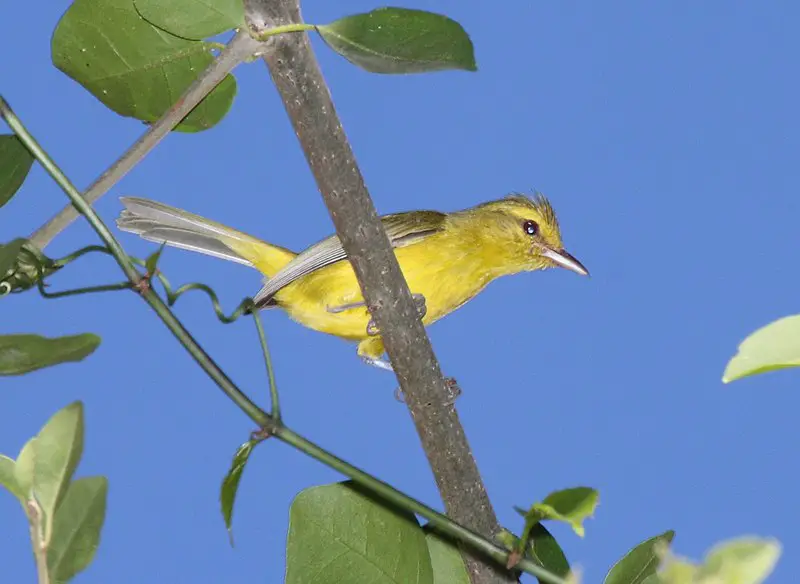
The Golden vireo is a bird species belonging to the Vireonidae family and is found explicitly in Mexico. It has adapted to living in subtropical and tropical dry forests and subtropical and tropical moist lowland forests.
Its distinct coloring led to its name, with its feathers being a golden hue. The bird has a small, but sturdy body with a pointed beak that helps it forage for insects and fruits, which forms the bulk of its diet.
The bird is known for its melodious warbling, and its song is often described as a musical whistle with various trills and warbles.
The Golden vireo is well adapted to its habitat and can often be found in the canopy seeking shelter from predators.
The bird’s natural beauty has led to its widespread popularity among birdwatchers, and it remains an integral part of Mexico’s unique biodiversity.Scientific classification:
| Kingdom | Animalia |
| Phylum | Chordata |
| Class | Aves |
| Order | Passeriformes |
| Family | Vireonidae |
| Genus | Vireo |
| Species | V. hypochryseus |
26. Lesser Roadrunner
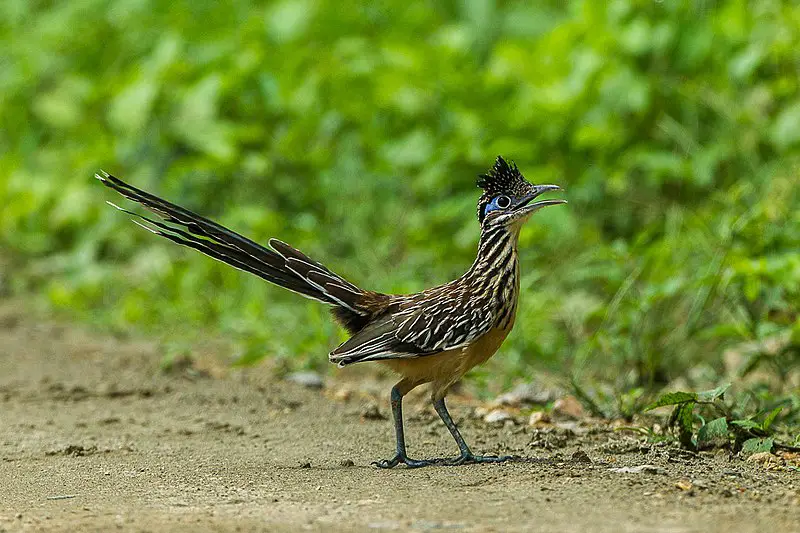
The Lesser Roadrunner bird is a member of the cuckoo family, measuring up to 51 cm long with a tail length of about 24 cm. The bird is slender and has long legs, earning it the Latin name “swift earth-cuckoo”.
Found in Mesoamerica, it is one of two species in the genus Geococcyx, the other being the Greater Roadrunner.
The Lesser Roadrunner is known for its swift movements and is an excellent runner, running at a speed of 24 km/h.
The bird has a pale brown body with dark stripes, making it well camouflaged in its habitat. It primarily feeds on insects, small reptiles, and rodents.
Despite its name, the Lesser Roadrunner is by no means “lesser” in its abilities and provides an important ecological role in its ecosystem as a predator and seed-disperser.Scientific classification:
| Kingdom | Animalia |
| Phylum | Chordata |
| Class | Aves |
| Order | Cuculiformes |
| Family | Cuculidae |
| Genus | Geococcyx |
| Species | G. velox |
Also Featured In: Birds that You’ll Find in Chiapas,
27. Tufted Jay
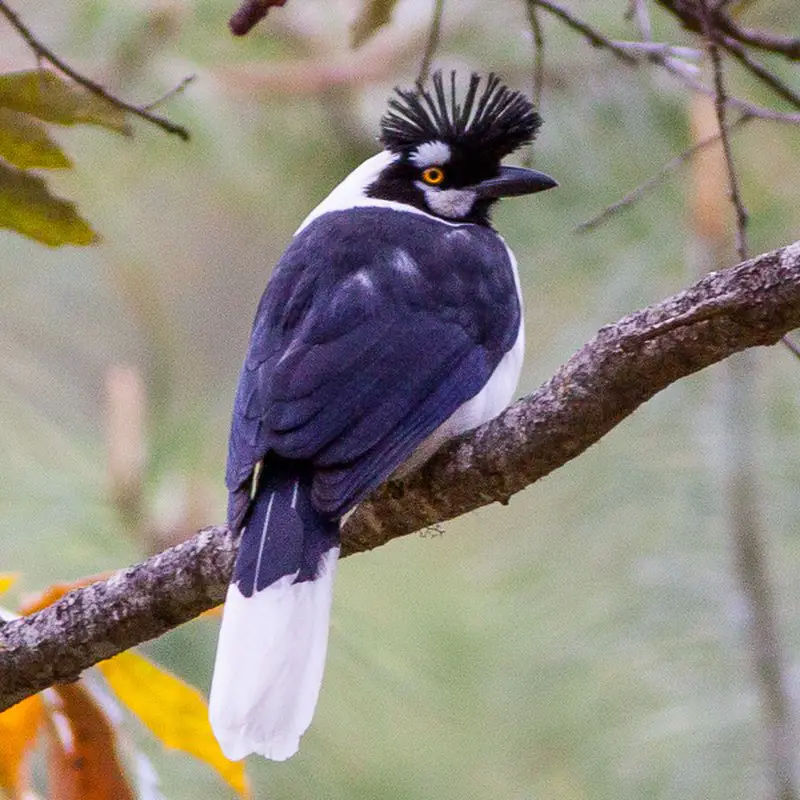
The tufted jay is a rare bird species found exclusively in the Sierra Madre Occidental region of Mexico. Its habitat mainly consists of moist subtropical forests filled with epiphytes and oak trees.
This bird belongs to the Corvidae family and is known for its beautiful tufted crest. Unlike migratory birds, the tufted jay is a resident of the region it inhabits.
Despite its limited range, this bird is an important component of its ecosystem. Its diet comprises mostly of fruits, insects, and small vertebrates.
Unfortunately, its population is declining due to habitat loss, deforestation, and disturbance. Hence, this species is listed as ‘near threatened’ by the International Union for Conservation of Nature (IUCN).Scientific classification:
| Kingdom | Animalia |
| Phylum | Chordata |
| Class | Aves |
| Order | Passeriformes |
| Family | Corvidae |
| Genus | Cyanocorax |
| Species | C. dickeyi |
28. Mexican Parrotlet
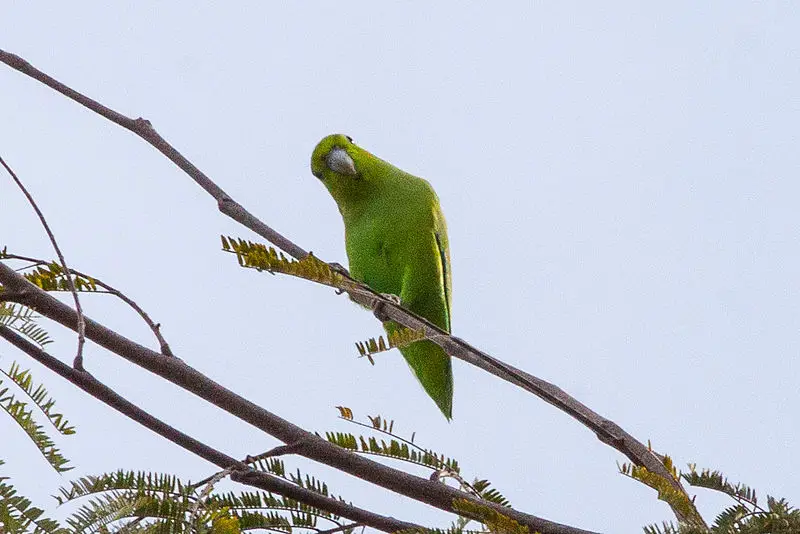
The Mexican parrotlet, also known as the turquoise-rumped parrotlet, is a species of parrot found in western Mexico.
These charming birds are prized for their beautiful turquoise-colored rumps and are a popular choice among bird enthusiasts.
The Mexican parrotlet is part of the family Psittacidae and has two subspecies: the Tres Marias parrotlet and F. c. cyanopygius.
These birds are endemic to the region and can be found from southern Sonora to Colima.
They are a joy to have as pets due to their playful and curious nature, and make wonderful additions to any aviary setting.
If one is looking for a beautiful bird with a captivating personality, the Mexican parrotlet is an excellent choice.Scientific classification:
| Kingdom | Animalia |
| Phylum | Chordata |
| Class | Aves |
| Order | Psittaciformes |
| Family | Psittacidae |
| Genus | Forpus |
| Species | F. cyanopygius |
29. Mountain Trogon

The Mountain Trogon, also known as the Mexican Trogon, is a bird species found in Guatemala, Honduras, and Mexico. It was first described by William John Swainson in 1827.
This bird belongs to the Trogonidae family and is sexually dimorphic. The male has striking metallic green-colored feathers on its crown, nape, upper parts and chest, while the female has a duller coloration.
Mountain Trogons are known for their distinctive calls, which are often heard within their habitat. These birds are found in mountainous areas and have been spotted as vagrants in El Salvador.
Overall, the Mountain Trogon makes for a beautiful sight with its bright green feathers, and its unique appearance is sure to capture your attention.Scientific classification:
| Kingdom | Animalia |
| Phylum | Chordata |
| Class | Aves |
| Order | Trogoniformes |
| Family | Trogonidae |
| Genus | Trogon |
| Species | T. mexicanus |
Also Featured In: Most Common Birds in Michoacán,
30. Mexican Woodnymph
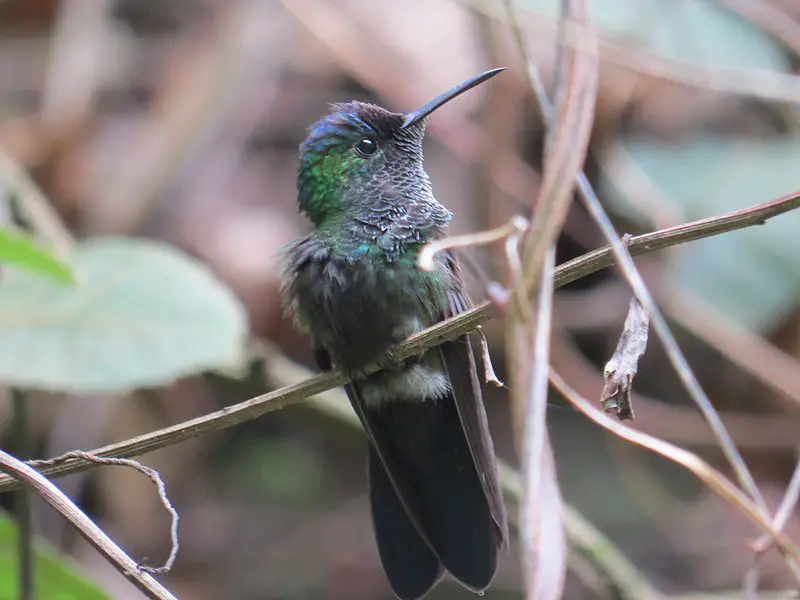
The Mexican woodnymph is a hummingbird species found only in western Mexico. It inhabits subtropical or tropical moist forests, where it feeds on flower nectar and insects.
Unfortunately, deforestation threatens this species, which is considered vulnerable. The Mexican woodnymph was previously classified under a different genus, Thalurania.Scientific classification:
| Kingdom | Animalia |
| Phylum | Chordata |
| Class | Aves |
| Clade | Strisores |
| Order | Apodiformes |
| Family | Trochilidae |
| Genus | Eupherusa |
| Species | E. ridgwayi |
31. Grey-Crowned Woodpecker
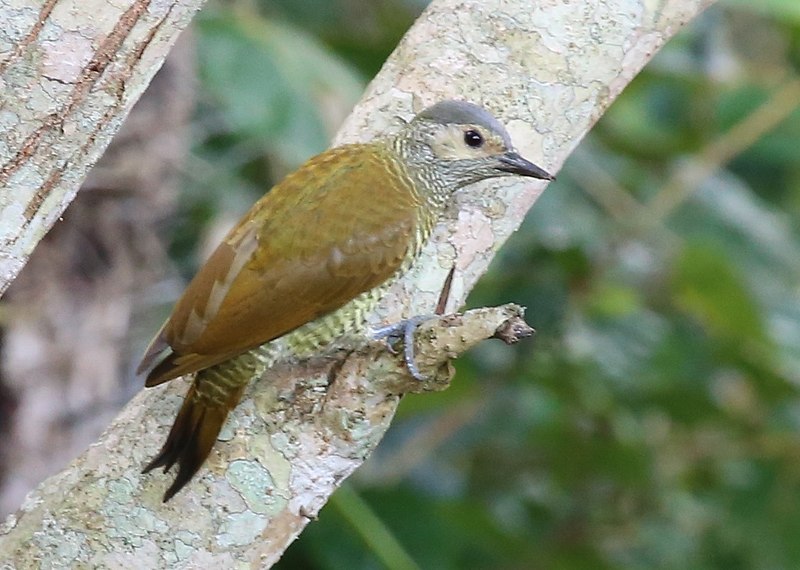
The Grey-crowned woodpecker is a bird species found solely in western Mexico. Previously known as Chloronerpes auricularis, it has been reclassified to Colaptes by taxonomists.
Belonging to the subfamily Picinae of the Picidae family, the bird has a grey crown and has been recorded to live near pine-oak forests, deciduous forests, and open woodlands.
The species is known for its habit of pecking the bark of trees to search for insects, and it is considered to be of least concern in terms of conservation status.
Overall, the Grey-crowned woodpecker is a unique bird species that contributes to the biodiversity of western Mexico.Scientific classification:
| Kingdom | Animalia |
| Phylum | Chordata |
| Class | Aves |
| Order | Piciformes |
| Family | Picidae |
| Genus | Colaptes |
| Species | C. auricularis |
32. Imperial Woodpecker
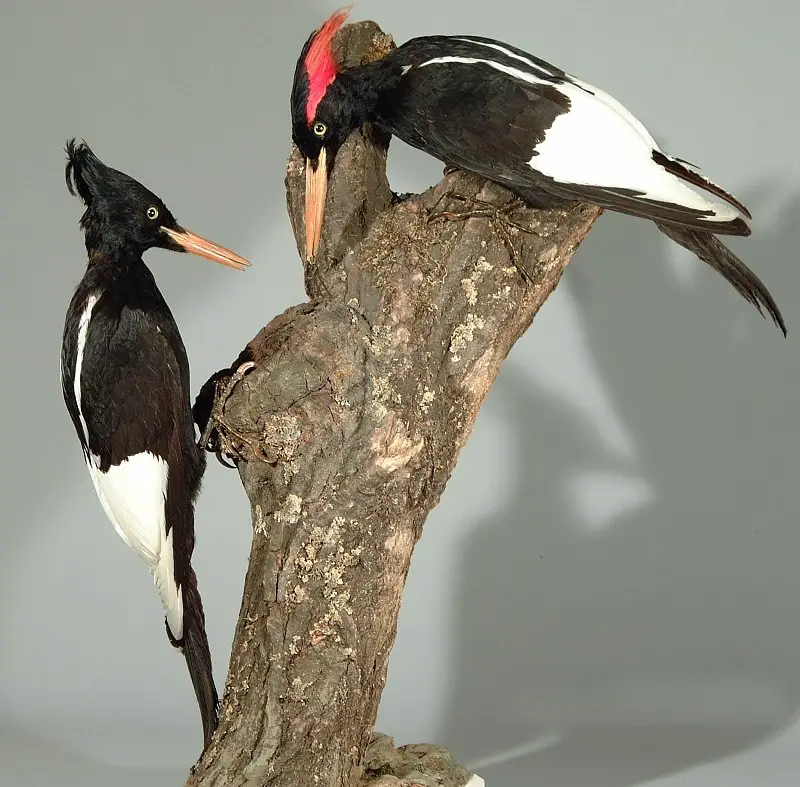
The Imperial woodpecker, found only in Mexico, is possibly the world’s largest woodpecker species. It can reach a length of 56-60 cm.
Researchers have observed that this bird has a slower climbing stride and a faster wing-flapping rate compared to other woodpeckers.
Due to its close relationship with other woodpecker species, the Imperial woodpecker is similar in appearance.
Despite efforts to locate this species, it is still uncertain whether it still exists. The future preservation of this magnificent bird ultimately depends on ongoing conservation efforts.Scientific classification:
| Kingdom | Animalia |
| Phylum | Chordata |
| Class | Aves |
| Order | Piciformes |
| Family | Picidae |
| Genus | Campephilus |
| Species | C. imperialis |
33. Rufous-Bellied Chachalaca
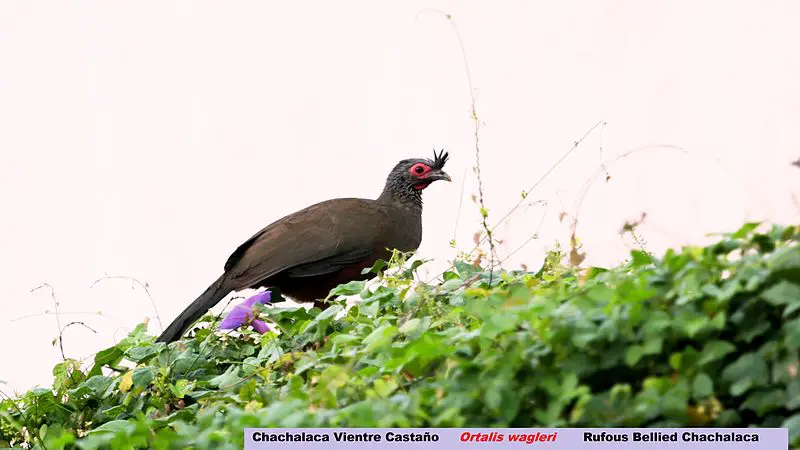
The Rufous-bellied chachalaca is a bird found only in western Mexico. It is a member of the Cracidae family, which includes guans, curassows and chachalacas.
It was previously believed to be a subspecies of the West Mexican chachalaca, but it is now considered a monotypic species. The Sonoran population is sometimes classified as a subspecies.Scientific classification:
| Kingdom | Animalia |
| Phylum | Chordata |
| Class | Aves |
| Order | Galliformes |
| Family | Cracidae |
| Genus | Ortalis |
| Species | O. wagleri |